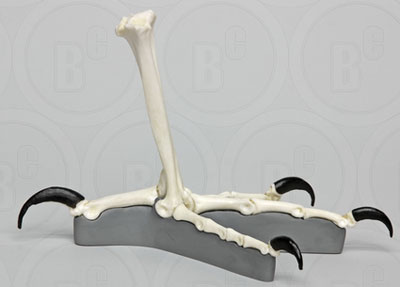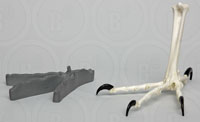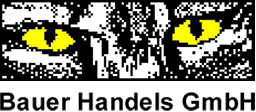Zoology: Bones
California Condor Foot
Gymnogyps californianus
California Condor Foot
The topography of the condor foot follows a raptorial pattern, meaning 2nd through 4th digits face forward and the 1st digit is turned backwards. This is a pattern found in other Falconiformes (diurnal birds of prey) where the toes are armed with strong talons for catching and holding prey. This would be an excellent addition to any biology or veterinarian program focused on ornithology.
The California condor (Gymnogyps californianus) is a New World vulture native to North America and historically ranged the entire Pacific coast (also see our California Condor Skull) . The largest flying bird in North America, the condor became extinct in the wild in the late 1980’s due to lead poisoning, habitat destruction and poaching. An intensive conservation program led by the U.S. Fish and Wildlife Service sought to collect all remaining wild condors for a captive breeding program in an effort to save the species. The success of the program resulted in the re-introduction of condors to the wild in 1992, with populations concentrated in central and coastal California. Reaching up to 4ft (121cm) in length with a 9ft (274cm) wingspan, these birds have black plumage with white patches on the underside of the wing and orange-red bare skin on the head and neck.
7 ½" L x 4 ¾" W x 4 ¾" H on base / 19.3 cm x 12.3 cm x 12.3 cm
Conservation Status: Endangered
The California condor (Gymnogyps californianus) is a New World vulture native to North America and historically ranged the entire Pacific coast (also see our California Condor Skull) . The largest flying bird in North America, the condor became extinct in the wild in the late 1980’s due to lead poisoning, habitat destruction and poaching. An intensive conservation program led by the U.S. Fish and Wildlife Service sought to collect all remaining wild condors for a captive breeding program in an effort to save the species. The success of the program resulted in the re-introduction of condors to the wild in 1992, with populations concentrated in central and coastal California. Reaching up to 4ft (121cm) in length with a 9ft (274cm) wingspan, these birds have black plumage with white patches on the underside of the wing and orange-red bare skin on the head and neck.
7 ½" L x 4 ¾" W x 4 ¾" H on base / 19.3 cm x 12.3 cm x 12.3 cm
Conservation Status: Endangered




Manufacturer:
| Bone Clones |  |
All prices plus VAT and shipping costs

